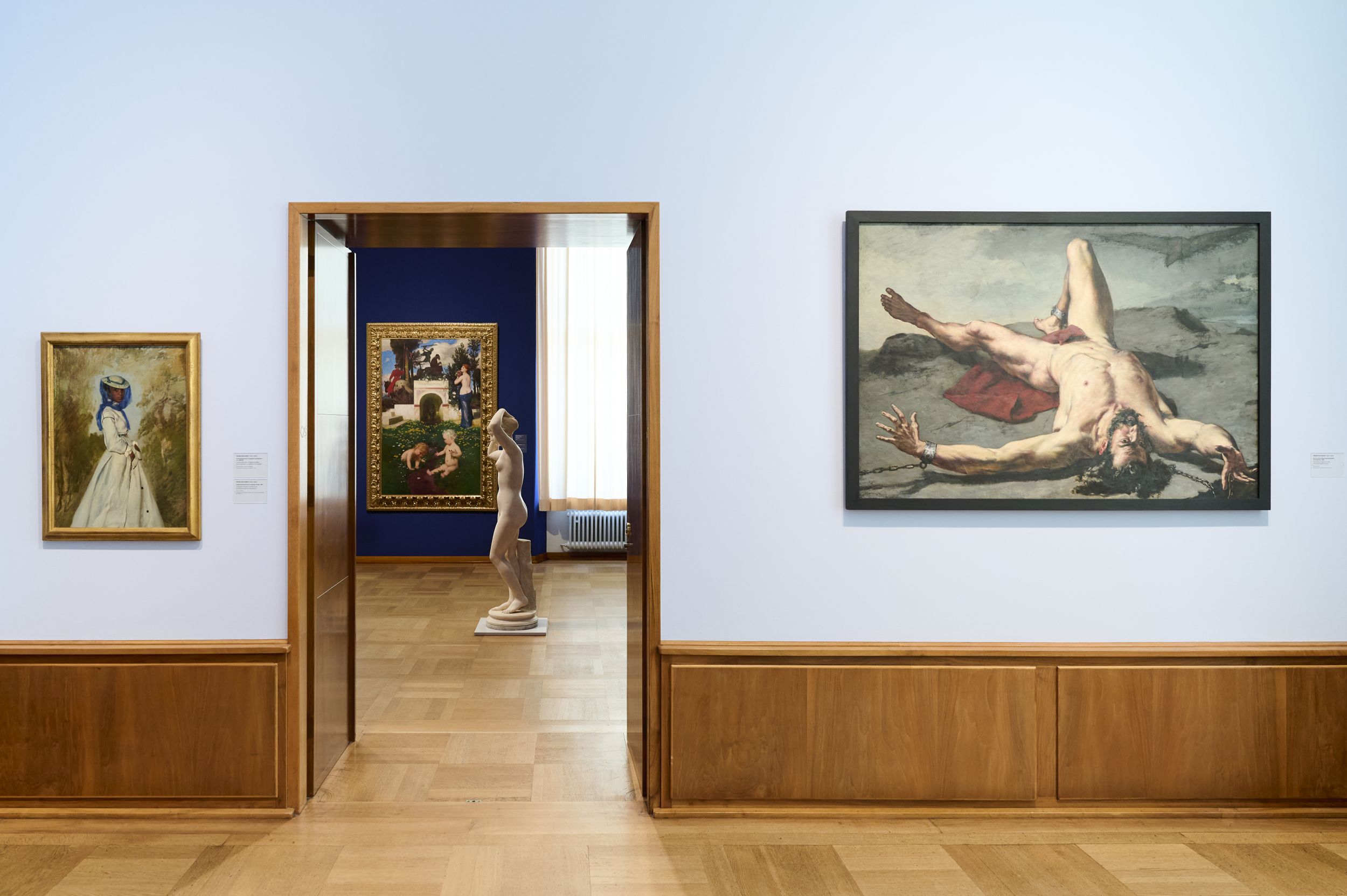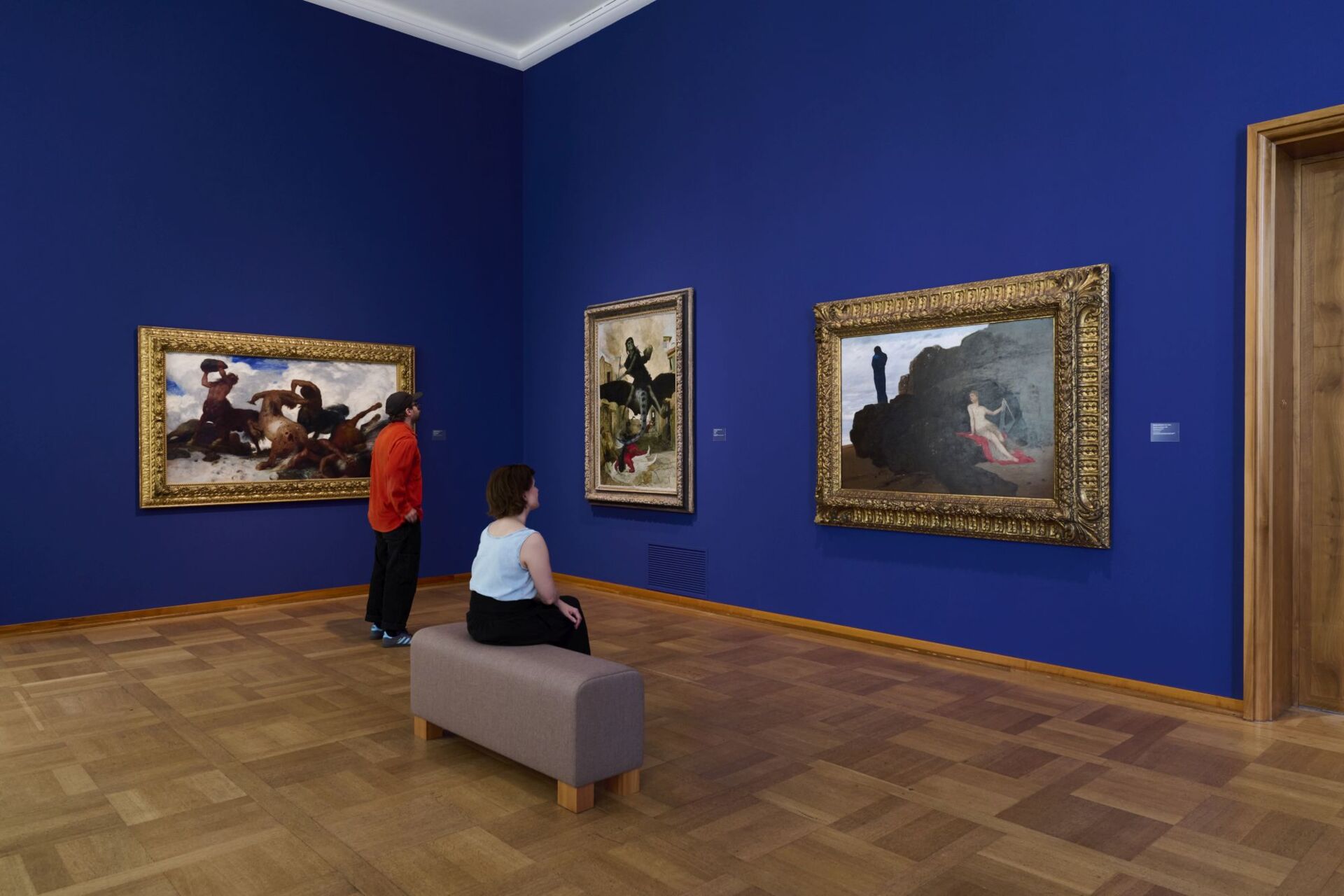19th Century
Collection presentation
The galleries on the Hauptbau's first floor facing St. Alban-Graben are the domain of the long nineteenth century. The exhibition showcases major works by internationally recognized masters of Swiss painting from Henry Fuseli and Caspar Wolf to Arnold Böcklin, Albert Anker, and Ferdinand Hodler.
Works by Camille Corot and Gustave Courbet mark the transition to French modernism, where samples of the art of Camille Pissarro and Paul Cézanne, of Auguste Renoir and Claude Monet illustrate the genesis and evolution of Impressionism. The presentation concludes with masterworks by Vincent van Gogh, Paul Gauguin, and Edgar Degas.

Rooms
Works by:
Albert Anker
Arnold Böcklin
Paul Cézanne
Camille Corot
Gustave Courbet
Edgar Degas
Eugène Delacroix
Anselm Feuerbach
Johann Heinrich Füssli
Paul Gauguin
Ferdinand Hodler
Joseph Anton Koch
Aristide Maillol
Claude Monet
Camille Pissarro
Odilon Redon
Pierre-Auguste Renoir
Auguste Rodin
Alfred Sisley
Félix Vallotton
Vincent van Gogh
Caspar Wolf

